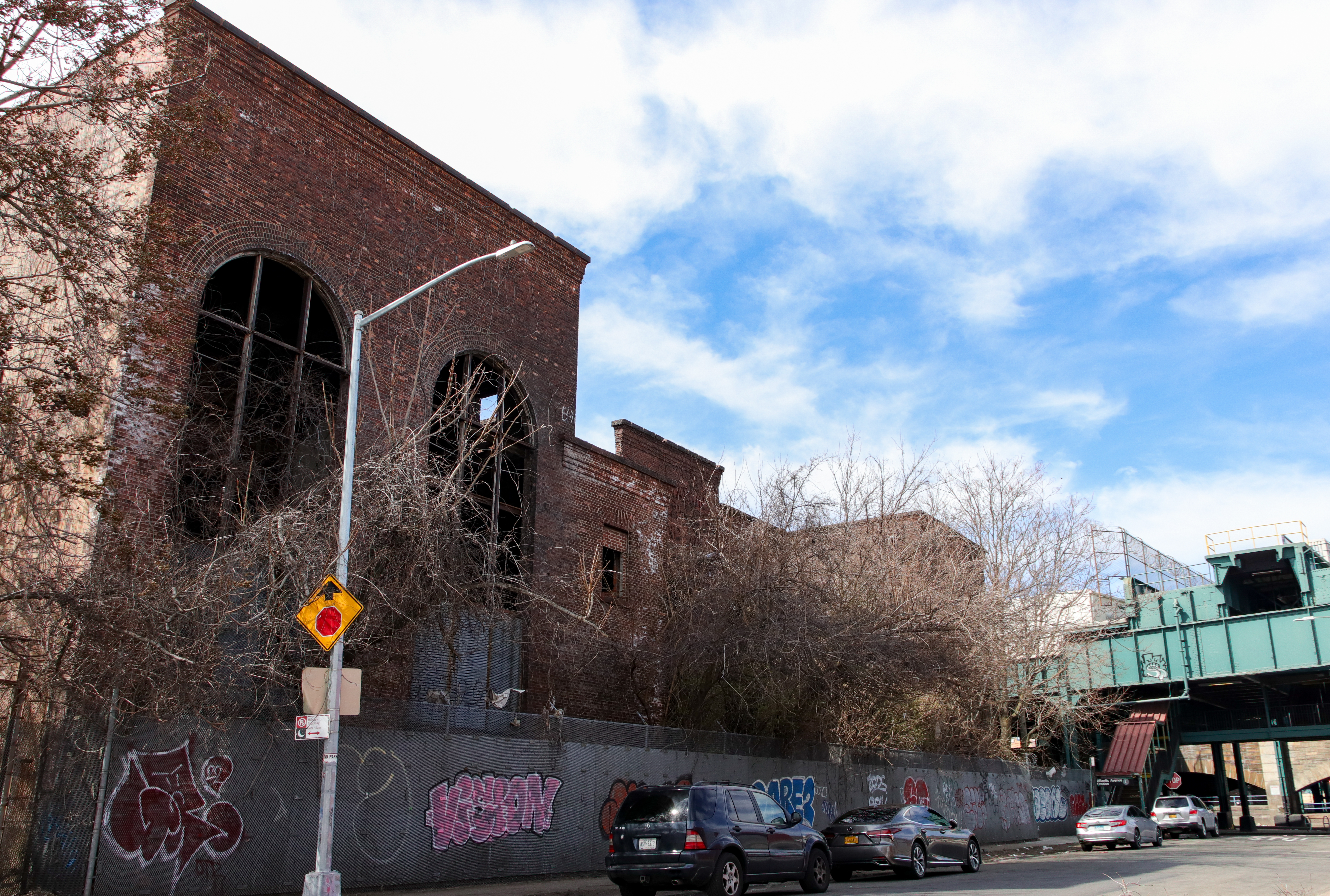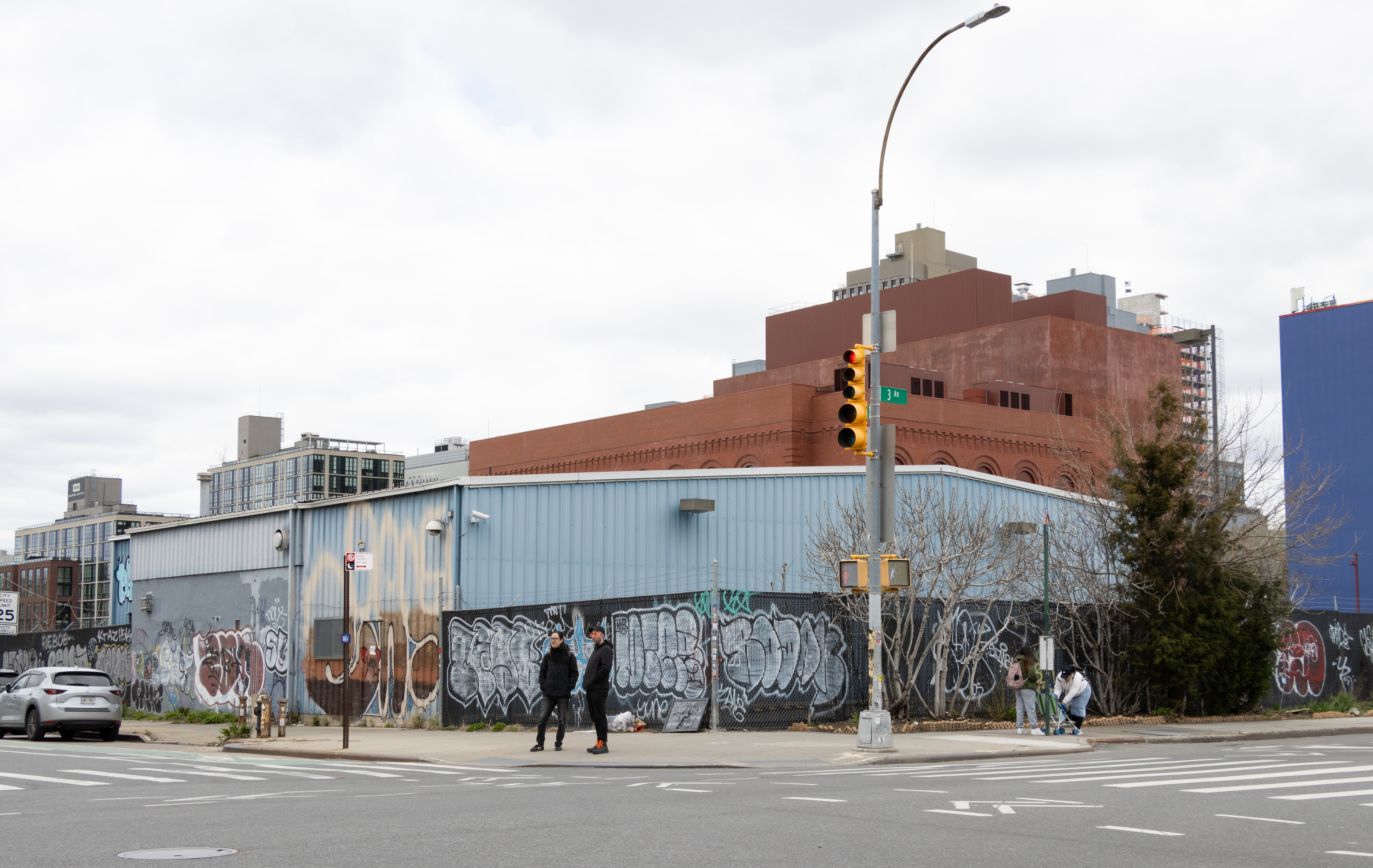Residential RE Squeezes Industrial Nabes
A lot of concern has been raised about the survival of the industrial sector in the city, and much of the worries stem from the encroachment of residential property on land used primarily for industrial uses, whether it be through zoning variances, or illegal conversions. The residential real estate market has put enormous pressure on…


A lot of concern has been raised about the survival of the industrial sector in the city, and much of the worries stem from the encroachment of residential property on land used primarily for industrial uses, whether it be through zoning variances, or illegal conversions. The residential real estate market has put enormous pressure on the industrial sector. In response, Bloomberg – in cooperation with advocacy groups and business leaders – has created a centralized agency to coordinate the effort to help the sector, initiated protective boundaries around the city called Industrial Business Zones, and has increased penalties and patrolling for illegal residential conversions.
A more complete look at the issue after the jump…
In an effort to keep industrial jobs under threat by real estate pressures and high costs from fleeing the city, Mayor Michael Bloomberg began developing a policy, with the help of local development corporations, industrial advocates and business leaders, to help industrial businesses. The effort began a few years ago, and it has been steadily gaining momentum and support, most recently marked by the ratification of 16 Industrial Business Zones around the city, mostly concentrated in Brooklyn, Queens and the Bronx. The mayor sees this as an important part of his five borough plan, and his efforts at diversifying the city’s economy.
Advocates are supportive – much of what they have been pushing for is included – but they still see much to be done.
Businesses falling under the category “industrial” include the obvious business types like manufacturing, construction, and transportation – but less intuitive businesses as well, including research and development labs, wholesale retail, and even movie production. Dirtier industries, such as waste management and utilities also fall under the title.
Industrial employment accounts for about 15 percent of all city jobs, and is a major source of employment for the unskilled labor pool, with more than half of its employees obtaining only a high school diploma or less. About three quarters of the industrial labor force is non-white, and many face language barriers. The industrial sector is one of small businesses: 80 percent of them have 20 employees or less. It accounts for about a quarter of outer-borough jobs.
While half of them plan to expand, less than half of them will stay in the city, according to studies by a consultant hired by the city. If the city wishes to retain these businesses, they will need to implement policy quickly, because 27 percent say they want to relocate immediately, according to same study.
In order to keep them here, the mayor created pockets around the city to help shelter industrial businesses from real estate pressures and strengthen their presence. Here, in the Industrial Business Zones, Bloomberg has made a commitment not to allow residential rezoning, providing stability for lease holding businesses – 60 percent of industrial businesses lease their space – threatened by landlords tempted by the prospect of more lucrative residential tenants. By gathering many different businesses of the same sector together, they promote “clustering” – a highly valued economic model that is considered to increase productivity and drive innovation. In these areas, or in the nearby Ombudsman Areas, business assistance will be offered, including hiring assistance and job training.
The city will offer businesses a relocation tax-credit worth $1000 per employee to relocate to the pockets, although businesses have complained that this isn’t enough.
But some worry about what will happen to the commitment not to rezone once Bloomberg’s term is over. “Our concern remains the next mayor,” Brian Coleman, chief executive of the Greenpoint Manufacturing and Design Center, a not-for-profit industrial developer, told Crain’s. “There is no guarantee that the IBZ will exist into the future.”
And Adam Friedman, executive director of the New York Industrial Retention Network, an advocacy group, and the only civilian voting member on the commission ratifying the area boundaries, criticizes the lack of protection from big-boxes, superstores, offices, hotels, homeless shelters and other non-industrial useswhich are permitted as-of-right (meaning no special approval is needed to develop) in the areas intended as industrial sanctuaries. Considering what is actually permitted in these areas, he calls the mantel of manufacturing district “misleading.”
In response, Council member Melinda Katz, Chair of the Land Use Committee, introduced a resolution that would create new “Industrial Employment Districts”. The districts would require special permits for the non-industrial uses, including big-boxes, in order to protect the industrial character of the areas.
Vito Lopez, the Brooklyn Democratic Leader and Assemblyman representing Bushwick, requested and was granted that the pocket located in his district be scaled back by about 20 blocks. He says that his constituents want residential development, not industrial.
Brad Lander, director at the Pratt Center for Community Development, says that as an advocate for affordable housing, he recognizes the need for residential space, but says he supports the current Industrial Business Zone boundaries, and actually supports wider boundaries. He considers manufacturing jobs an essential ingredient in creating an affordable place to live.
Red Hook, with the last working port in New York City, has been a point of contention. It was the only Industrial Business Zone that had a vote cast against it’s approval. Friedman cast the vote because it did not include a cement factory that receives shipments by barge and two other parcels that are adjacent to working maritime uses such docks for barges with heavy construction equipment. “Permitting residential development on these sites will lead to complaints about noise and traffic, and create pressure for more residential development which will destabilize the area, ” he said.
But advocates will agree that, although not perfect, even simple existence of these pockets is a relief. Eve Baron, acting director of The Planning Center at the Municipal Art Society, an urban planning advocacy group, calls the Industrial Business Zones “an enormous first step.”
Another front in the administration’s policy to assure space for industrial businesses, will be to crack down on illegal conversions of industrial property for residential uses, and the have increased resources for the stepped up effort. Also, Council member Diana Reyna, working closely with the mayor’s office of Industrial and Manufacturing Businesses, has introduced legislation that would quadruple the fines and jail time for such violations, and impose a fine of $50 to $100 everyday for each unit illegally converted until the violation is corrected.
In an effort to reduce the administrative burdens accompanying parking violation contention, for businesses as well as the municipality, a program called NYC Delivery Services was started where a business will waive its right to dispute a ticket, and in return receive reduced fines for certain types of tickets.
One problem has been that many real estate tax incentives are geared towards owners when such a high concentration of the businesses actually lease. As a solution, the city is seeking to change them to apply to lease holders.
To create additional space, the city is making the 13 million square feet of industrial property it owns more widely available. Bloomberg recently announced that since 2002, industrial “land sales have resulted in the retention and creation of more than 6,100 permanent jobs.”
Over the next couple months, one of the administration’s goals will be to create a 15 member Industrial and Manufacturing Business Council, appointed by the mayor, to advise the city on industrial policy. The Council will be a public/private partnership, and will be comprised of executives from economic development agencies, representatives from industrial development corporations, business leaders, researchers and academics, and advocates for industry and real estate.
The New York Industrial Retention Network is pushing for a not-for-profit ownership model to create stability for renters, modeled after the successful Greenpoint Manufacturing and Design Center. The center acquired and renovated an industrial complex and then offered it for rent to industrial tenants, now employing over 500 area residents. NYIRN argues that “with a not-for-profit ownership model, rents are based on operating costs as opposed to speculative pressures in the market, and therefore are kept relatively affordable and stable.”
Pamela Hannigan, faculty at the Real Estate Institute of New York University, posited in the Stamford Review that the an industrial property tax that is currently based on rent-producing potential provides a disincentive for renovation.
As a result of contentious bargaining between community and advocacy groups and the city over the rezoning of the Williamsburg-Greenpoint waterfront, there are addition funds committed to industrial retention in that area. $4 million has been allocated for increased relocation assistance, infrastructure improvements, business assistance, and more.
Former mayor, Rudolf Gulianni, actively sought to open up manufacturing areas for residential development to fill a much needed demand for housing in the city. The chairman of the New York City Planning Commission at the time, Joseph B. Rose, told the Times that the zoning changes would begin in neighborhoods where support for the initiative has already been voiced by property owners, such as Williamsburg, Greenpoint and Red Hook, and Port Morris in the Bronx.
In an editorial from late 1996, the Times lauded the plan “as a common-sense approach that could help boost the supply of housing and at the same time revitalize former industrial areas that have fallen on hard times as manufacturing operations have closed or fled the city.”
But the Daily News editorial board derided Giuliani’s proposals for the manufacturing areas in late 1997 as “hellbent on limiting future manufacturing jobs, which fed generations of Brooklyn families.”
The Manhattan Institute, a conservative think-tank, published a report in mid 2005 saying that rather than solidify a tenuous industrial presence in the neighborhoods, the city should actually encourage residential developments in some of the areas in order to counter the housing crunch facing the city.
In the report written by Regina Armstrong, formerly of the Regional Plan Association, an urban planning advocacy group, and Tina Lund, they argue that since the city “has space for 500,000 more manufacturing jobs than actually exist,” that five manufacturing areas in each of the boroughs should be rezoned for residential use. Since these lost manufacturing jobs are not coming back, they say, the city would stand to benefit more by using the space for housing, which would further result in a gain in increased property-tax revenues, and the creation of construction jobs.
In respect to the protective boundaries created by Bloomberg, Armstrong said she had not been aware of their ratification, and thus could not comment on them.





What's Your Take? Leave a Comment